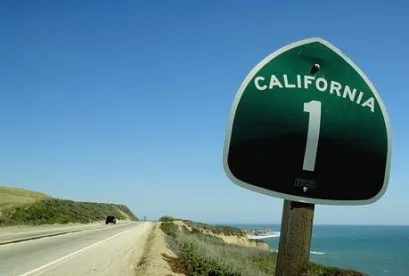California’s new greenhouse gas target requires California agencies to take implementing actions and aligns California with the European Union’s recently adopted standard.
On April 29, Governor Brown ordered a 40% reduction in California’s greenhouse gas emissions from 1990 levels, to be achieved by 2030. While Executive Order B-30-15[1] does not create enforceable emission requirements, it obligates all state agencies to exercise their respective jurisdiction to achieve the new 2030 target.
California’s landmark climate protection law, AB 32 (formally known as the Global Warming Solutions Act of 2006),[2] requires greenhouse gas emissions to be capped at 1990 levels by 2020. California officials expect the state to achieve the AB 32 mandate on time, thanks to the combination of tools comprised in the Air Resources Board’s Climate Change Scoping Plan, including its cap-and-trade program. California has 12% of the country’s population and the largest economy of all of the states but is currently only the second-largest in greenhouse gas releases, representing 6.9% of total US emissions.[3]
AB 32’s 2020 standard was itself first established in an executive order. Executive Order S-3-05, issued by Governor Schwarzenegger in 2005,[4] set a much more ambitious ultimate goal as well: an 80% reduction from 1990 levels, to be achieved by 2050. The 2050 target remains the policy of the state but has not been codified to date. With the 2020 standard in sight as well as in reach, the 2050 standard has been the subject of increasing focus and increasing concern. The technical capability to achieve an 80% reduction, while requiring significant innovation yet to come, has been less in question than the ability to manage the cost and disruption to the economy.
Without the additional interim milestone adopted by Governor Brown’s order, the temptation to put off necessary implementing measures could well have turned a steady 35-year climb to an 80% emissions reduction into an impossibly steep ascent, with costs and complexities too great to overcome in the years leading up to 2050. Governor Brown’s action, establishing a new target just beyond the 2020 horizon, provides for a less severe rate of change and increases the likelihood of success in reaching the 2050 goal.
Executive Order B-30-15 is also well-timed to contribute to the upcoming 21st United Nations Climate Change Conference of the Parties (COP 21) in Paris, which Governor Brown is expected to attend. The governor’s order aligns California’s climate protection targets with the 2030 standard adopted by the European Union in October 2015, and with the EU’s own long-term goal of an 80–95% reduction in emissions by 2050.[5]
Under the new order, every California agency with authority over greenhouse gas emissions sources is required to adopt measures that will contribute toward achieving the new 40% interim reduction target, as well as to the ultimate 80% reduction target. As the energy sector is responsible for approximately 21% of overall California greenhouse gas emissions,[6] the California Public Utilities Commission (CPUC) and the California Energy Commission (CEC) can both be expected to incorporate the requirements of this order in a variety of proceedings, including the CPUC’s Long-Term Procurement Plan and the CEC’s approval of thermal power plants and promulgation of energy efficiency standards.
The California Air Resources Board is expressly required to update its Climate Change Scoping Plan,[7] the California Natural Resources Agency must update its climate adaptation and preparedness plans (known as “Safeguarding California”),[8] and all state agencies must incorporate climate change costs and considerations in planning and investment, particularly respecting infrastructure decisions. The order also requires the governor’s Office of Planning and Research to convene a technical advisory group to assist state agencies in their implementation of climate protection measures.
The new executive order is the latest in a series of climate protection and clean energy initiatives undertaken by the governor. Proposed legislation and new administrative measures are now being developed to implement Governor Brown’s call for 50% of California’s energy supply to come from renewable sources, a 50% reduction in fossil fuels used by the transportation sector, and the doubling of the energy efficiency of existing buildings.[9]
[1]. http://gov.ca.gov/news.php?id=18938
[2].http://www.leginfo.ca.gov/pub/05-06/bill/asm/ab_0001-0050/ab_32_bill_20060927_chaptered.pdf
[3]. http://www.epa.gov/statelocalclimate/documents/pdf/CO2FFC_2012.pdf
[4]. http://gov.ca.gov/anews.php?id=1-2005-June
[5]. http://ec.europa.eu/clima/policies/brief/eu/
[6]. Of greenhouse gas emissions associated with electricity generation, 11% derives from California power production and the remainder from energy generated out of state. http://www.arb.ca.gov/cc/inventory/inventory_current.htm
[7]. http://www.arb.ca.gov/cc/scopingplan/scopingplan.htm
[8]. http://resources.ca.gov/climate/safeguarding/
[9]. See Gov. Edmund Brown, Jr., Inaugural Address (Jan. 5, 2015) (transcript available here).


 />i
/>i